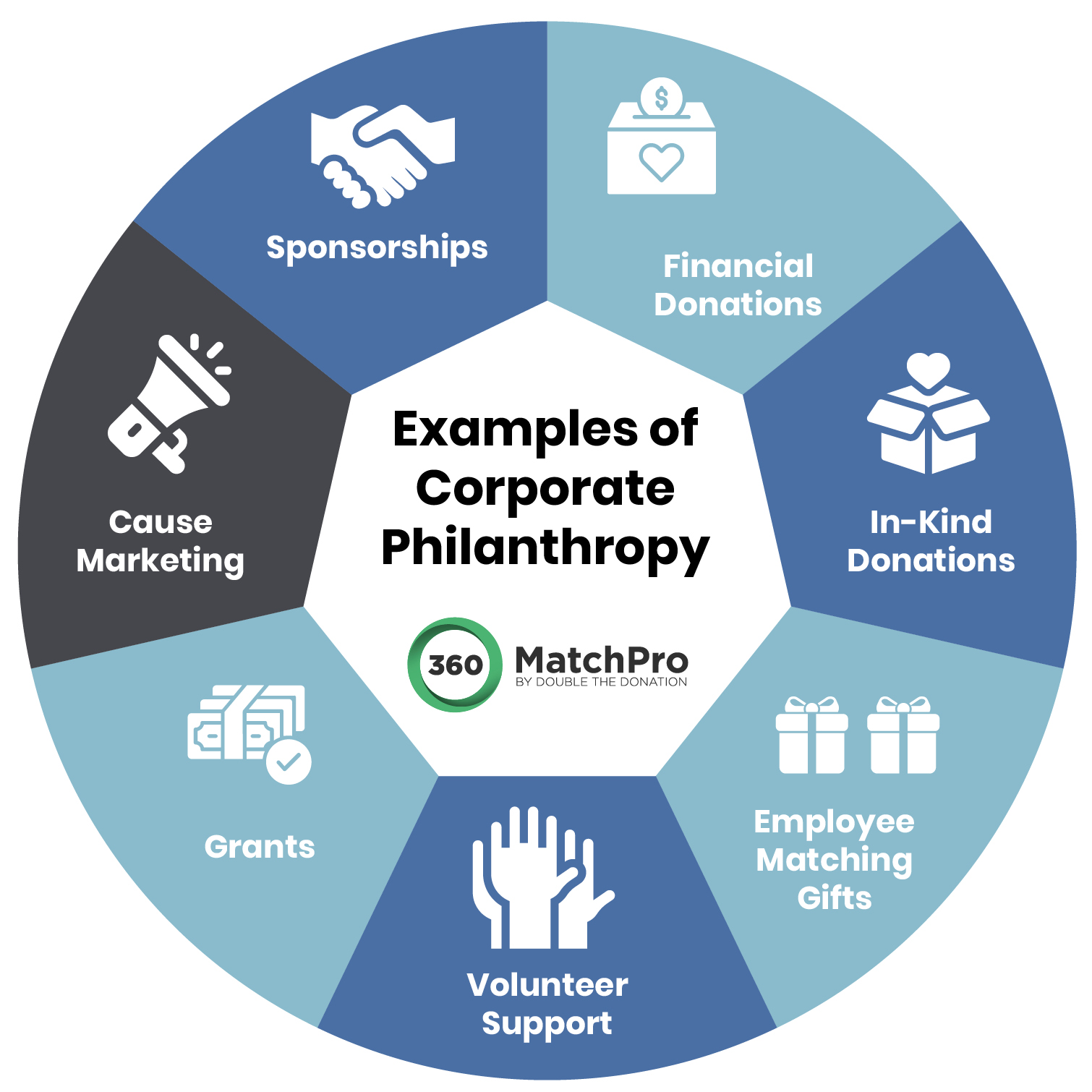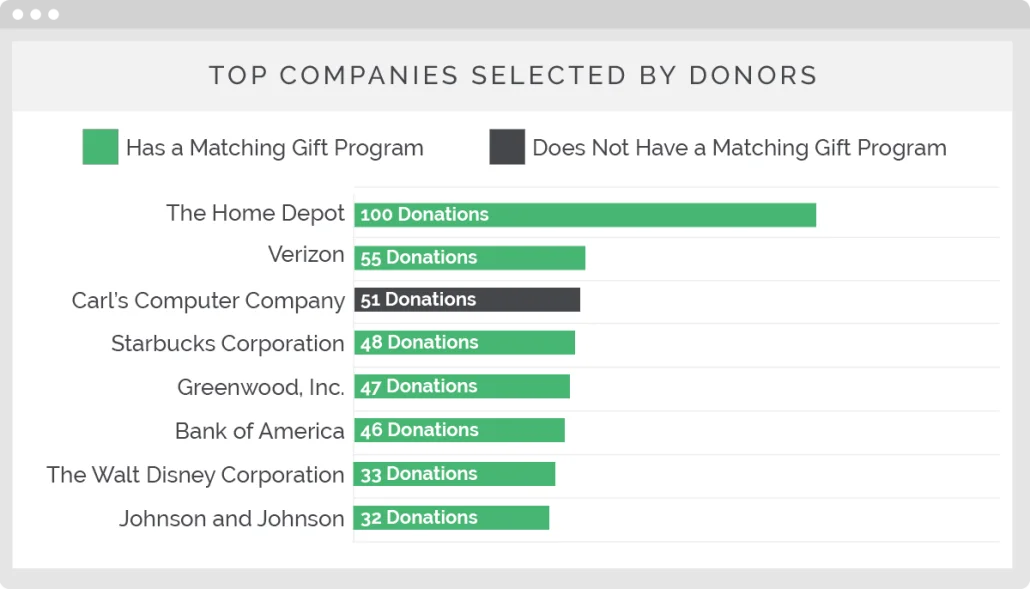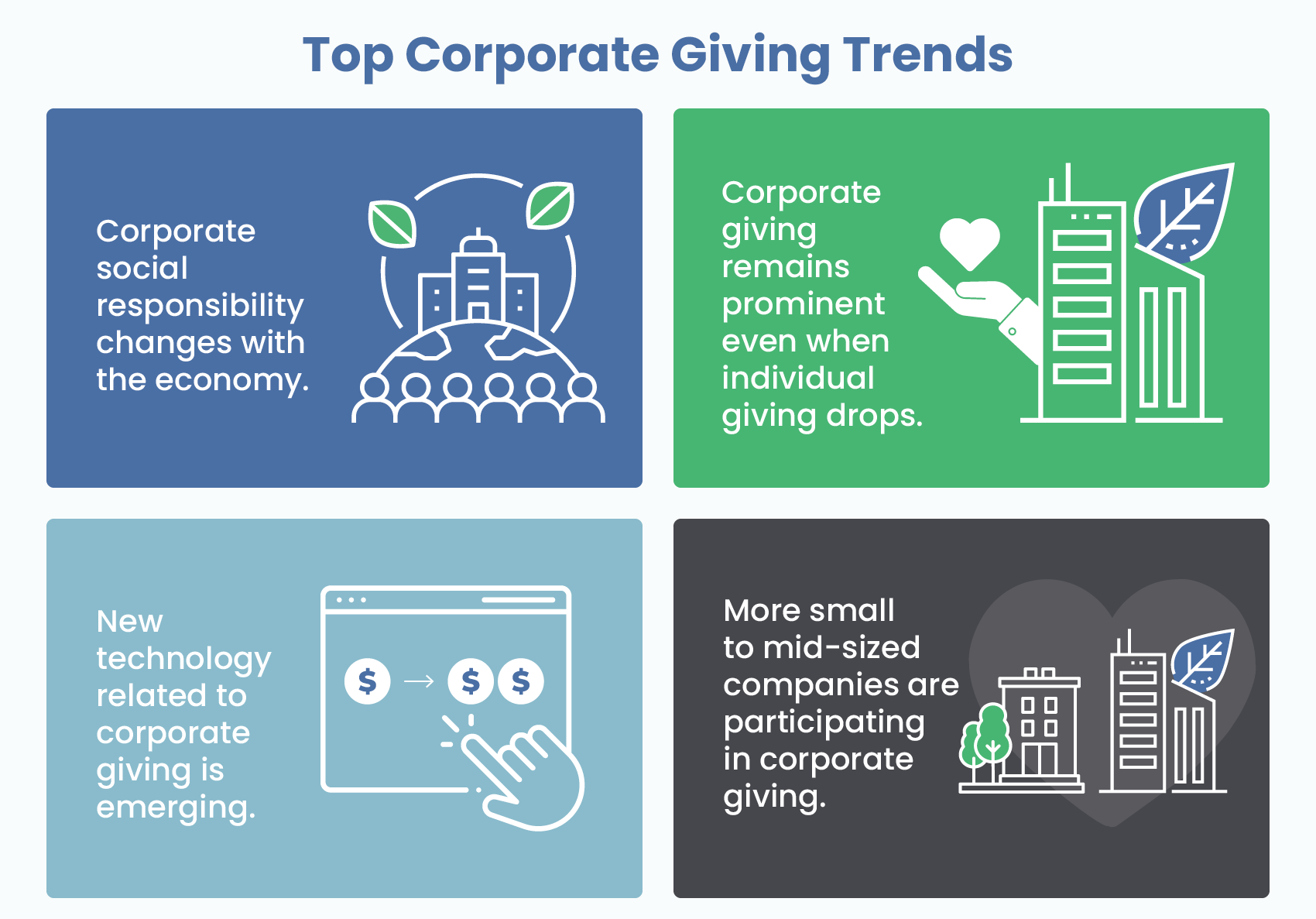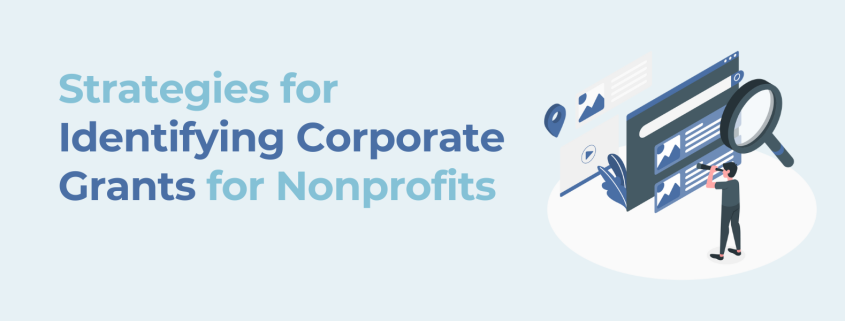Strategies for Identifying Corporate Grants for Nonprofits
Corporate grant funding can be a powerful source of revenue for nonprofits, helping to fuel important programs, expand outreach, and sustain daily operations. However, identifying corporate grants—and securing them successfully—can be a challenging process.
In this blog, we’ll explore eight expert-proven strategies to help your nonprofit locate corporate grants that align with your mission, values, and goals:
- Understand the Types of Corporate Grants Available
- Define Your Funding Priorities and Goals
- Research and Use Online Grant Databases
- Tap Into Your Network and Existing Partnerships
- Monitor Corporate Social Responsibility Trends
- Build Relationships Before You Apply
- Customize Your Approach for Each Corporation
- Stay Organized and Persistent
According to Double the Donation research, corporations donate an average of $20 to $26 billion to nonprofits each year, with the total amount continuing to increase on an annual basis. That’s a lot of funding opportunities that you don’t want to miss out on, which is where identifying the right corporate grant opportunities comes in.
Understand the Types of Corporate Grants Available
Corporate philanthropy can take several forms, and understanding the distinctions between them can help you find a more strategic fit for your organization.
Starting off, cash grants are the most direct form of support, typically awarded through a formal application process. These grants may fund programmatic work, general operating costs, or specific initiatives aligned with the company’s social responsibility goals. Many larger corporations have structured giving programs with clear eligibility guidelines and deadlines, while smaller companies may support local causes on a more informal basis.
On the other hand, in-kind donations are another valuable form of corporate support. These non-cash contributions might include donated technology, supplies, professional services, or event space, freeing up your budget for other needs, and building the foundation for a longer-term relationship with the company.
Other common forms include employee matching gifts, where companies match donations made by employees to eligible nonprofits, and volunteer grants, where companies donate money based on employee volunteer hours. However, these differ from standard corporate grants as they must be requested by an individual staff member supporting your cause.
Finally, it’s important to understand the difference between corporate sponsorships and philanthropic grants. While sponsorships are usually tied to marketing benefits for the company (such as logo placement, event exposure, or media mentions), grants are focused more on social impact and community benefit.

Define Your Funding Priorities and Goals
Before you start researching potential funders, it’s crucial to define what you need funding for and why. Without clarity on your objectives, you risk wasting time chasing opportunities that aren’t the right fit.
Therefore, start by identifying your organization’s most pressing needs. Are you launching a new program, expanding an existing initiative, or trying to build infrastructure? Are you seeking funding for a specific project, or are you prioritizing unrestricted support? The more specific you are about your needs, the more easily you can identify corporations whose giving priorities align.
Next, articulate your target outcomes:
- What will success look like?
- How many people will you serve?
- What community issues will you address?
Funders want to see measurable impact, and your ability to define and communicate that impact is critical.
You should also create a profile of your ideal corporate partner. Consider geography (local vs. national), company size, industry sector, and shared values. A food security nonprofit might naturally align with grocery chains, while a STEM education nonprofit could seek tech company support. These filters will help narrow your focus as you begin your search.
Research and Use Online Grant Databases
Identifying the right corporate grants starts with having access to the right information. Fortunately, several powerful tools exist to help nonprofits find, evaluate, and track corporate funding opportunities more efficiently than ever.
For example, Double the Donation offers access to thousands of corporate grant programs, along with matching gift initiatives, volunteer grant opportunities, and in-kind donation details. It’s an especially helpful tool for identifying which companies support causes like yours—and how to engage them.
Plus, don’t overlook corporate websites themselves. Many companies have dedicated corporate social responsibility (CSR) or community giving pages that outline their philanthropic focus areas, eligibility criteria, deadlines, and application procedures. Larger corporations often publish annual CSR or ESG reports, too, which can offer clues about future funding directions.
Plus, don’t overlook corporate websites themselves. Many companies have dedicated corporate social responsibility (CSR) or community giving pages that outline their philanthropic focus areas, eligibility criteria, deadlines, and application procedures. Larger corporations often publish annual CSR or ESG reports, too, which can offer clues about future funding directions.
Tap Into Your Network and Existing Partnerships
In grant seeking, relationships matter. While some corporate grant programs operate through formal applications, many are initiated—or significantly influenced—through personal connections and community engagement.
Start by leveraging your board of directors, staff, donors, and volunteers. Ask if anyone has connections to local companies or sits on advisory committees. A single employee referral—or a group advocating together—can create a warm introduction that helps your nonprofit get its foot in the door and stand out in a crowded field.
Here’s a sample report from Double the Donation, which can be used to locate clusters of donors within the same companies:

You can also look within your existing partnerships. If you’ve received in-kind donations, event sponsorships, or volunteer groups from a company in the past, explore whether they offer formal grant programs. Building on existing relationships is often the fastest route to new funding.
Monitor Corporate Social Responsibility Trends
Corporate social responsibility, and corporate giving along with it, are continuing to shift and grow as the business landscape evolves. Staying attuned to developing trends and patterns will help you craft proposals that resonate with corporate funders.

You’ll also want to pay attention to emerging themes in philanthropy, such as racial equity, climate action, workforce development, or mental health. Corporations often adjust their giving to reflect these broader social conversations, and subscribing to industry news can keep you informed about shifts in corporate giving patterns.
Understanding a company’s “why” will help you speak their language in your proposal and demonstrate alignment with their mission.
Build Relationships Before You Apply
One of the most overlooked strategies in corporate fundraising is the importance of cultivating relationships well before submitting a grant application. After all, a “cold” proposal to a corporation with no prior engagement is far less likely to succeed than one preceded by authentic connection.
You can even begin by engaging with the company’s brand online. Follow them on social media, comment on their posts, and share content that aligns with your mission. Attend public events they sponsor, and introduce yourself to employees who are actively involved in CSR efforts.
Consider inviting corporate representatives to participate in your organization’s events, volunteer opportunities, or community roundtables. These informal touchpoints can lead to deeper conversations and mutual interest.
Then, once contact is established, maintain regular communication. Send newsletters, annual reports, and updates on your organization’s impact. Relationship-building is a long game, and consistent engagement lays the groundwork for future financial support.
Customize Your Approach for Each Corporation
When you’re finally ready to apply for a corporate grant, resist the temptation to copy and paste previous applications. Corporate funders expect to see proposals that are tailored specifically to their mission, interests, and community impact goals.
Begin each proposal by researching the company’s values, giving history, and stated priorities. If they’ve supported environmental initiatives, highlight how your project contributes to sustainability. If their CSR strategy focuses on youth development, show how your programs align with educational outcomes.
Then, use data to demonstrate your nonprofit’s effectiveness, but also tell a compelling story. Share anecdotes that humanize your work and illustrate the difference corporate funding can make. Include outcomes, testimonials, and real-world examples if possible.
Finally, be clear about the mutual benefit. Companies want to know how your partnership will support employee engagement, brand reputation, or customer trust. Include opportunities for recognition, volunteer involvement, or co-branded campaigns to sweeten the deal.
Stay Organized and Persistent
Securing corporate funding is rarely a one-and-done process. It often requires persistence, follow-up, and long-term planning.
In order to best manage the process from start to finish, we recommend developing a grant calendar that includes submission deadlines, reporting requirements, and renewal periods. Many corporate grants are annual, and staying ahead of the clock positions you to submit timely, well-prepared proposals.
From there, you’ll also want to use your CRM to track interactions with corporate representatives, provide meeting notes, and manage your outreach efforts. Treat this as a relationship management tool, not just a task list.
Finally, don’t get discouraged by rejection. Often, it takes multiple years of engagement before a grant is awarded. Keep the lines of communication open, send updates, and demonstrate progress. Even a “no” today can turn into a “yes” tomorrow with the right approach.
Wrapping Up & Additional Corporate Grant Resources
Identifying corporate grants for your nonprofit isn’t just about funding. It’s about creating shared value and building strategic relationships that support long-term mission impact. By incorporating these strategies into your fundraising plan and equipping your team with the right tools to do so, you can position your nonprofit for considerable success.
Ready to learn more about corporate giving opportunities and beyond? Check out these additional recommended resources:
- What Are Corporate Grants for Nonprofits? Guide + Examples. New to corporate philanthropy? This comprehensive guide breaks down what corporate grants are, best practices for making the most of them, and real-world examples of successful nonprofit-corporate partnerships.
- 16 Eye-Opening Corporate Grant and In-Kind Gift Statistics. Want to understand the scope and trends of corporate giving? These compelling statistics shed light on how much companies give, which sectors benefit most, and what motivates corporate grantmakers.
- Free Download: How to Secure Corporate Grants & In-Kind Giving. This actionable guide provides step-by-step instructions for identifying, approaching, and securing corporate support. This free downloadable resource is a must-have for nonprofit development teams.




